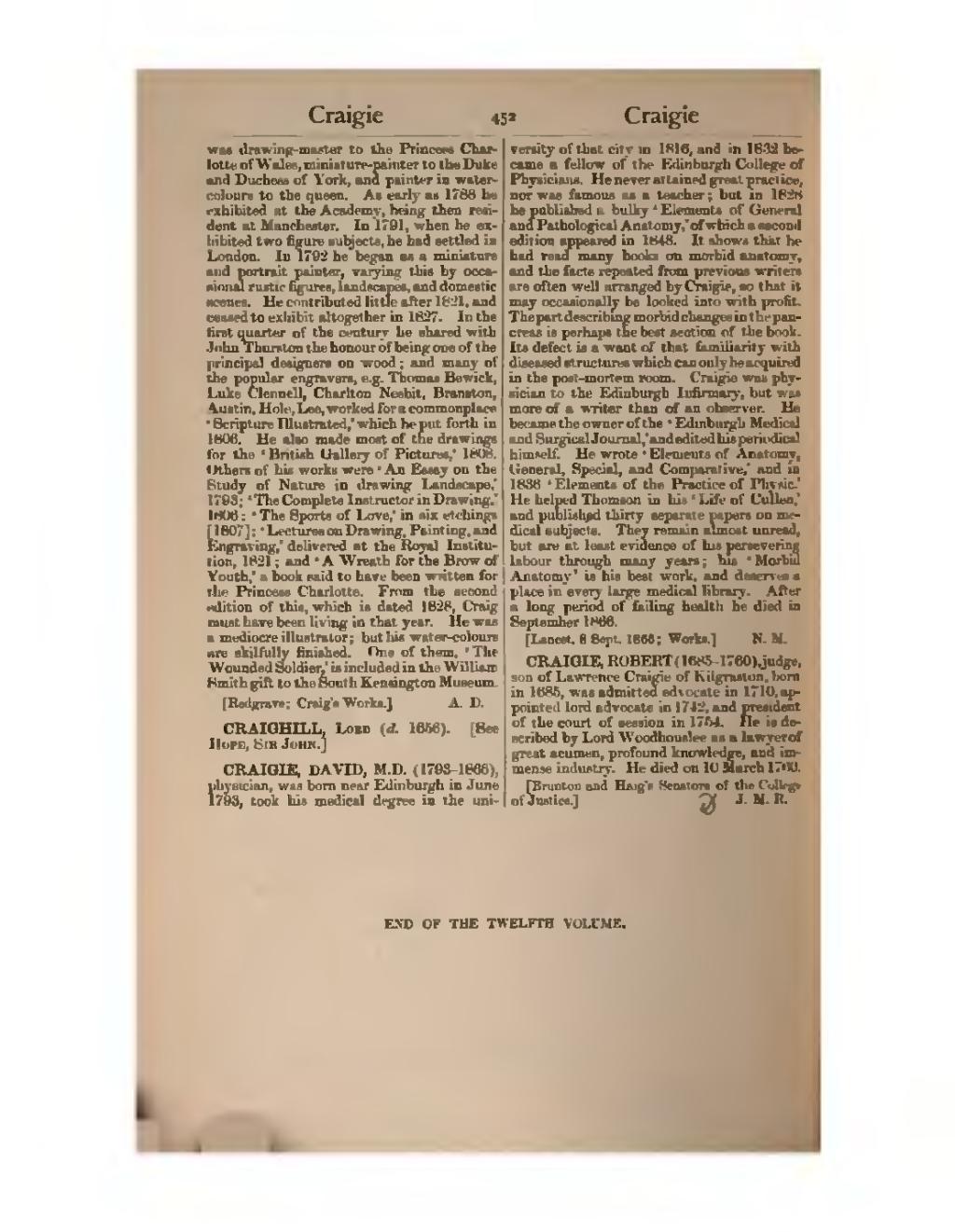was drawing-master to the Princess Charlotte of Wales, miniature-painter to the Duke and Duchess of York, and painter in water-colours to the queen. As early as 1788 he exhibited at the Academy, being then resident at Manchester. In 1791, when he exhibited two figure subjects, he had settled in London. In 1792 he began as a miniature and portrait painter, varying this by occasional rustic figures, landscapes, and domestic scenes. He contributed little after 1821, and ceased to exhibit altogether in 1827. In the first quarter of the century he shared with John Thurston the honour of being one of the principal designers on wood; and many of the popular engravers, e.g. Thomas Bewick, Luke Clennell, Charlton Nesbit, Branston, Austin, Hole, Lee, worked for a commonplace ‘Scripture Illustrated,’ which he put forth in 1806. He also made most of the drawings for the ‘British Gallery of Pictures,’ 1808. Others of his works were ‘An Essay on the Study of Nature in drawing Landscape,’ 1793; ‘The Complete Instructor in Drawing,’ 1806; ‘The Sports of Love,’ in six etchings [1807]; ‘Lectures on Drawing, Painting, and Engraving,’ delivered at the Royal Institution, 1821; and ‘A Wreath for the Brow of Youth,’ a book said to have been written for the Princess Charlotte. From the second edition of this, which is dated 1828, Craig must have been living in that year. He was a mediocre illustrator; but his water-colours are skilfully finished. One of them, ‘The Wounded Soldier,’ is included in the William Smith gift to the South Kensington Museum.
[Redgrave; Craig's Works.]
CRAIGHILL, Lord (d. 1656). [See Hope, Sir John.]
CRAIGIE, DAVID, M.D. (1793–1866), physician, was born near Edinburgh in June 1793, took his medical degree in the university of that city in 1816, and in 1832 became a fellow of the Edinburgh College of Physicians. He never attained great practice, nor was famous as a teacher; but in 1828 he published a bulky ‘Elements of General and Pathological Anatomy,’ of which a second edition appeared in 1848. It shows that he had read many books on morbid anatomy, and the facts repeated from previous writers are often well arranged by Craigie, so that it may occasionally be looked into with profit. The part describing morbid changes in the pancreas is perhaps the best section of the book. Its defect is a want of that familiarity with diseased structures which can only be acquired in the post-mortem room. Craigie was physician to the Edinburgh Infirmary, but was more of a writer than of an observer. He became the owner of the ‘Edinburgh Medical and Surgical Journal,’ and edited his periodical himself. He wrote ‘Elements of Anatomy, General, Special, and Comparative,’ and in 1836 ‘Elements of the Practice of Physic.’ He helped Thomson in his ‘Life of Cullen,’ and published thirty separate papers on medical subjects. They remain almost unread, but are at least evidence of his persevering labour through many years; his ‘Morbid Anatomy’ is his best work, and deserves a place in every large medical library. After a long period of failing health he died in September 1866.
[Lancet, 8 Sept. 1866; Works.]
CRAIGIE, ROBERT (1685–1760), judge, son of Lawrence Craigie of Kilgraston, born in 1685, was admitted advocate 1710, appointed lord advocate in 1742, and president of the court of session 1754. He is described by Lord Woodhouslee as a lawyer of great acumen, knowledge, and industry. He died on 10 March 1760.
[Brunton and Haig's Senators of the College of Justice.]
END OF THE TWELFTH VOLUME.
